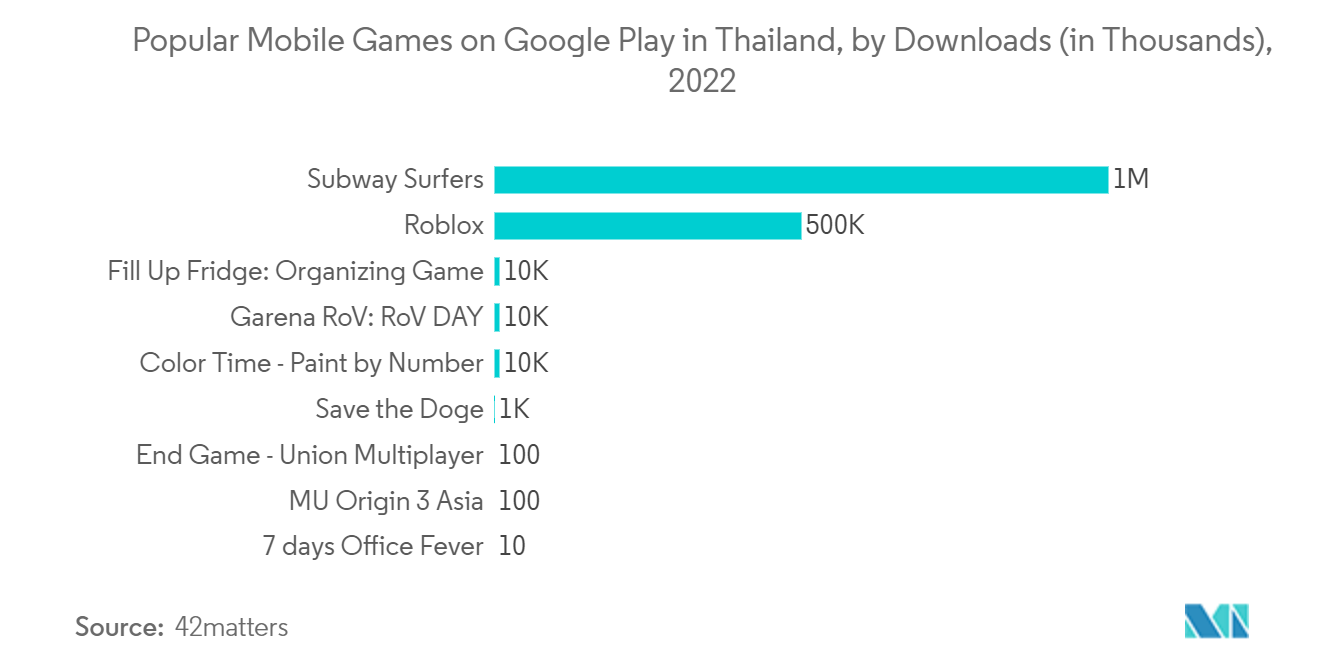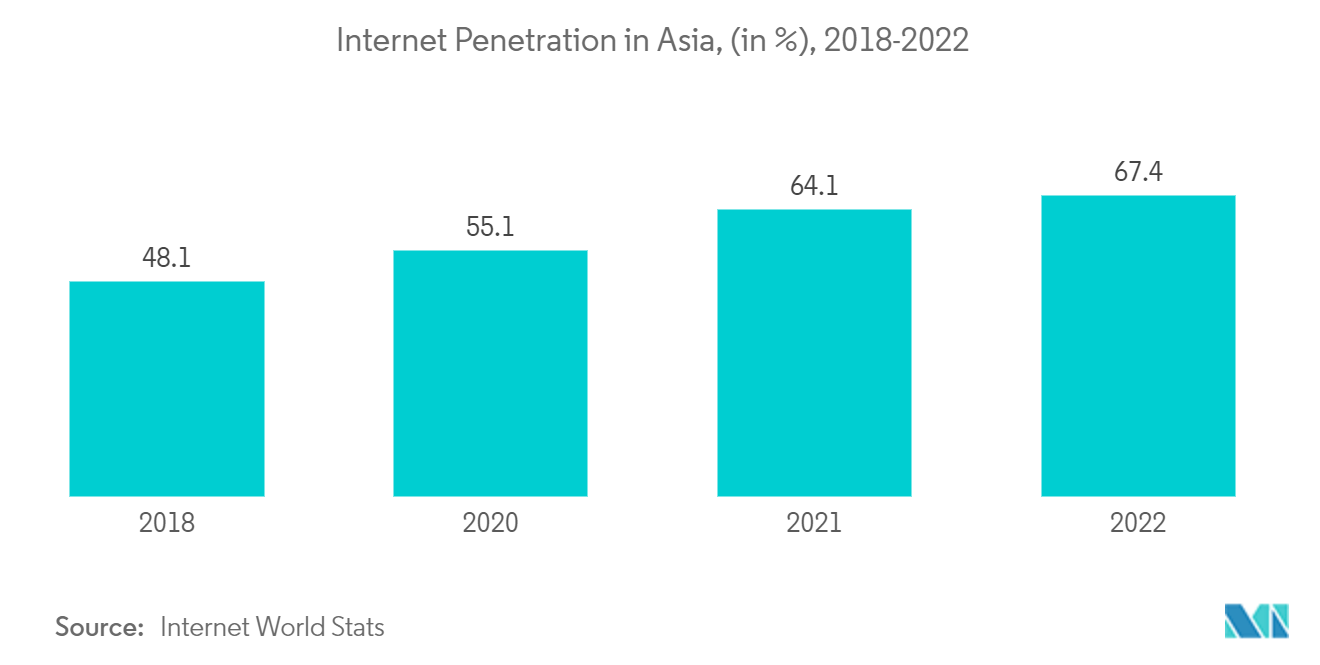Market Trends of Southeast Asia Gaming Industry
Mobile Segment to Hold Significant Market Share
- According to the All-Correct Games blog, the number of mobile online gamers in Southeast Asia increased to around 250 million in the previous year. Malaysia, Thailand, Vietnam, Indonesia, Singapore, and the Philippines are Southeast Asia's six most important mobile gaming markets.
- The availability of a free-to-play option is one of the primary drivers of mobile gaming when compared to personal computers. The introduction of cloud-based mobile gaming may accelerate this trend.
- Though e-sports is a relatively new concept in Southeast Asia compared to traditional games, it is expanding rapidly due to the region's growing gaming market. Furthermore, over 55% of mobile gamers are over 55, with only 8% being teenagers, owing to the popularity of hyper-casual and casual games, which do not require many skills and can be played by any user. The majority of hypercasual games are monetized through advertising. However, the mobile gaming market is seasonal, so the games' popularity may fade quickly. As a result, forecasting demand for new games is difficult, limiting market growth.
- On the other hand, the advent of cloud gaming has removed the constant need for hardware upgrades, and players worldwide can play cloud games on their existing devices and on future devices that may have low specs. The most significant opportunity for vendors in the segment is to reach smartphone gamers, who make up a sizable portion of the gaming audience and prefer to play PC and console games on their mobile devices.
- According to a recent Google survey, one in every three smartphone owners in Southeast Asia plays mobile games at least once every seven days. Over 82% of Southeast Asia's urban online population is a gamer, and mobile gaming outnumbers PC and console games by a wide margin.

Increasing Internet Penetration to Boost the Market's Growth
- Due to increased internet penetration and the proliferation of low-cost smartphones among urban and rural populations, the online gaming market experienced impressive growth. This ecosystem is monetized through revenue streams such as in-app purchases, pay-per-download, subscription services, in-app advertisements, incentive-based advertisements, and so on.
- With rising internet penetration, major technology vendors are investing in online gaming, driving the regional market's growth. For example, with the release of "New World" in September, Amazon accelerated its entry into the MMORPG (Multiplayer Online Role-Playing Game) gaming industry. Google LLC closed its in-house Stadia game development studios to refocus it as a platform for providing games and game streaming services from existing developers.
- According to Akamai Technologies, when an update is released, gaming software downloads account for a significant amount of internet traffic. A modern game's software update generates massive traffic, roughly equal to 30,000 web pages. As a result, multiple people in the same house trying to play an online match simultaneously can overload any home's internet bandwidth.
- According to a recent Ericsson Mobility report, there will be 4.4 billion (4,400 million) 5G subscriptions worldwide by the end of 2027, accounting for more than half of all mobile subscriptions. By the forecast period, data traffic per smartphone in Southeast Asia and Oceania will be the highest globally, with 15 million 5G subscriptions in the previous year.
- Mobile subscriptions in Southeast Asia and Oceania have surpassed 1.1 billion (1,100 million). In the previous year, 5G subscriptions were estimated to reach 15 million and continue to increase rapidly over the next few years, reaching around 560 million by the forecast period. Data traffic per smartphone could get 46 GB per month in 2027, representing a 34% CAGR in Southeast Asia and Oceania.


